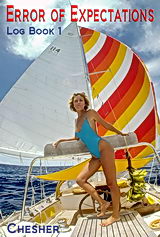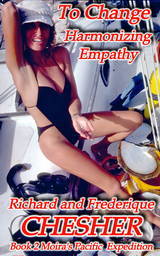101010Digitize101010
The control systems of life are digital and operate on analog processes that in turn calibrate the digital controls.
Analog refers to a continuous even flow of information (or elements or energy). Something is analog if you can divide it infinitely.
-
A glass of water is digital. It is there or not. But the water in a glass is analog. The glass can be half full, tenth full, a 100th full, a 1000th full, and on and on.
-
The distance between two points is analog. It can be divided in half, a tenth, a 100th, and so on.
-
The movement of a person is analog, a steady, graded process.
Digital refers to a discontinuous on/off quality.
-
A switch is either on or off.
-
A digital gauge has numbers on it.
-
An individual human being is digital, you can't have half a person.
-
Form is digital. The galaxy has a form, not a half a form or a tenth of a form.
-
Patterns are also digital.
Both form and pattern change in an analog way just as the movements of an individual are analog.
A sand beach is an analog object but the grains of sand are digital.
Light is weird. It can be characterized as digital (individual particles called photons) or a wave (continuous flow). This has bothered physicists (who wanted it to be one or the other, but not both), ever since the discovery was made.
Computers operate using analog voltage and current but process digital data.
Switches
Switches are important control systems and have certain characteristics.
-
They are digital because they are either on or off.
-
They control the flow of energy that originates from a separate source than the one operating the switch.
-
From the viewpoint of the flow of energy the switch does not exist. If the switch is on the current flows as if it is not there. If the switch is off there is no current, and so nothing to switch.
Switches only exist at the moment of change from one state to another. Digital switches often act as a control system for analog processes. You can switch your mind from one subject to another. Or maybe I should say your mind switches from one subject to another since your consciousness is not necessarily the one doing the switching. Right?
Feedback Switches
Consider the following system, consisting of a house in a city with a furnace, thermostat and human resident. The control systems operate in a hierarchy and alternate between decisions (digital) and the impact of these decisions (analog).
Arrows indicate the direction of control.
The
community sets limits on what is considered
reasonable behavior based on economic, social
and political considerations. This social
bias actually alters economic, social and
political parameters between limits of accepted
risk.
These decisions influence the personal decision of a member of the community on what is too hot or too cold. If the householder is poor or supposed to be rugged, or environmentally concerned, a cooler house will be acceptable.
Personal limits are tested against actual levels of discomfort and physical effort to keep warm. When the limits of comfort exceed the personal bias the householder will go to the thermostat and change the setting.
The thermostat is a simple feedback circuit that tests the analog changes in temperature in the house. When the temperature reaches a specific low point the thermostat switches the furnace on, and off when the temperature reaches a specific high point.
This kind of control system can be seen in a multitude of relationships.
In the following example the same kinds of relationships are seen developing behavior patterns for individual people as they mature into society. (see also the Birth of Mind).
From Birth to 4 our analog desires for physical and mental gratification deal with decisions on what we are attracted to or repelled by. We set personal limits (usually pretty low) and develop strategies on when and how to move to or away from what we want. Our strategies test the limits we set. If our actions generate rewards we continue to use them, if they generate punishment we avoid them.
Between age 4 and 8 we become aware of a larger social world and determine our personal limits for what is above and what below us in the local hierarchy. Here we develop strategies for gaining resources and support beyond what we need for physical gratification. Our strategies are tested against how individuals react to us. If our actions generate support and resources we use them. If they move us down the pecking order we abandon them (if we can).
When we reach our teens we become concerned with how we relate to a still larger community. We become interested in right or left alternative choices of behavior. Should we be self assertive or cooperative? Go with the crowd or be more independent? We test our strategies against public as well as personal opinion. We assume political positions depending on the ones favored by parents, friends, and communities.
At maturity, in theory, we undergo a shift into a separate level of integration. Here we have developed the limits and strategies for to/from, up/down, left/right and now become involved with through time. This concern is set by our life expectancy and our desire to survive in some fashion - by raising a family or building some lasting creation. The integrative aspect of thinking that develops as we mature exerts a progressive control overlay over the whole set of earlier levels of tolerance. Adults, for example, commonly sacrifice personal desires for social, political, economic, career or family requirements.
Setting Value Limits for self-assertive or integrative Behavior
The limits we set, on how and when to be self-assertive or integrative, act to modify how and when we activate our earlier strategies to get what we desire, achieve social dominance, or move with or against the flow of consensus.
Capra (1996) provides an excellent summary of the differences we use in thinking and the values we set as we alternate between self-assertiveness or integration:
| Thinking | Values | ||
| Self-assertive | Integrative | Self-assertive | Integrative |
| rational | intuitive | expansion | conservation |
| analysis | synthesis | competition | cooperation |
| reductionist | holistic | quantity | quality |
| linear | nonlinear | domination | partnership |
We alternate between these conditions depending on our circumstances, and sometimes - because the thinking and values are analog - mix and match them to suit the present needs. Capra points out that the splits between self-assertive and integrative tend mirror sexual differences in behavior. They also reflect dominance between left and right hemisphere thinking of individual minds.
On a higher level of organization, our civilization has its own bias for these processes, currently assigning greater preference for rational analysis, reductionist science, and linear thinking. And greater emphasis on expansion, competition, quantity and domination.
Shifting this bias to improved integrative thinking and values is a reasonable focus for everyone who wants a sustainable future.
Analog/Digital control sequences play an essential role in cognition.



